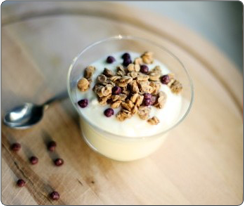An Internal Battle of the Bacteria
Right now, there is an epic battle being waged inside your body: literally billions of bacteria are fighting for survival in your digestive system! Some of these bacteria are considered “harmful,” “bad,” or “unfriendly,” while others are often termed “beneficial,” “good,” or “friendly.” Knowing the distinction, as well as which side to support, and how to do so, can make an amazing difference in your overall health and wellbeing.
It has been suggested that 70-80% of your immune system lives in your gut and is directly related to your balance of healthy and unhealthy bacteria.
When harmful bacteria increase in number inside of you, it may decrease the effectiveness of your gut’s immune system. On the other hand, boosting levels of friendly bacteria can help support your immune system and encourage digestive wellness.

Even so, as long as you keep the unhealthy bacteria in check by maximizing the number of friendly bacteria, you can consider yourself victorious. What many people don’t know is that it’s all too easy to unconsciously help unfriendly bacteria to thrive. The Standard American Diet (SAD) is high in sugar, which unhealthy bacteria use for fuel to grow and multiply.
Additionally, friendly bacteria can be inadvertently killed off by medications such as antibiotics, and otherwise reduced by the effects of stress, illness, or even just aging. As a result, it’s fairly common for people to have less than optimal levels of friendly bacteria inside of them.

One way to increase the number of friendly bacteria and inhibit the growth of the unfriendly is to take an effective probiotic supplement. This helps maximize the number of healthy bacteria in your body, which in turn diminishes the ranks of the unhealthy, putting the balance back in a positive state.
The most important thing to remember about using probiotics is that they don’t do any good unless they arrive in the intestines alive. That is, if they are not protected from stomach acids and bile, they may be killed as they move through the first steps of digestion. A process called “enteric coating” helps meet this challenge. A capsule of probiotics that is enteric coated is specially designed to survive the stomach’s higher pH level and to release its unspoiled contents into the intestines. This makes enteric coating essential for any supplemental probiotic you consider.
What about yogurt?
Beyond enteric coating, it’s important to know how to tell good sources of friendly bacteria from those that are less effective. Many food companies have begun adding probiotics to their prepared, processed foods, including yogurt and other dairy products. What they don’t tell the consumer, however, is that these products typically also contain sugar (which feeds unfriendly bacteria), and have been processed and pasteurized to the point that many of the healthy bacteria may have been killed off before they even enter your body. This is one reason using a good probiotic supplement may be a better investment.

What to look for in a probiotic
To ensure that you receive all the benefits of probiotic supplementation, look for a high-quality supplement that has been prepared by a trusted brand name. A good probiotic supplement:
- Includes several different strains of beneficial bacteria
- Contains Lactobacillus acidophilus and Bifidobacterium bifidum
- Is freeze-dried to ensure maximum potency
- Features enteric coating to help deliver probiotics to the intestines where they will do the most good, instead of being exposed to harmful acids in the stomach
1 Mercola, J. (2009). Wall Street Journal gives big thumbs up to good bacteria. Retrieved April 30, 2011
2 Campbell, K. (n.d.). Bugs in the bowel. Healthy Way Magazine, Retrieved April 30, 2011 from http://www.healthywaymagazine.com/issue30/06_bugs_in_bowel.html
3 Probiotic basics. (n.d.). International Probiotics Association. Retrieved April 30, 2011 from http://www.internationalprobiotics.org/content/?id=23
4 Functional Foods Fact Sheet: Probiotics and Prebiotics, International Food Information Council Foundation, ©2009.
5 Lenard, L. (2009). Optimizing digestive health (and why most probiotics fail to work). Life Extension Magazine, Retrieved April 30, 2011
6 Webster, S. (n.d.). Improving preservation of probiotic bacteria by freeze-drying, and achieving stomach and bile acid resistance. Food Engineering & Ingredients, Retrieved April 30, 2011 from http://www.fei-online.com/featured-articles/improving-preservation-of-probiotic-bacteria-by-freeze-drying-and-achieving-stomach-and-bile-acid-resistance/index.html

